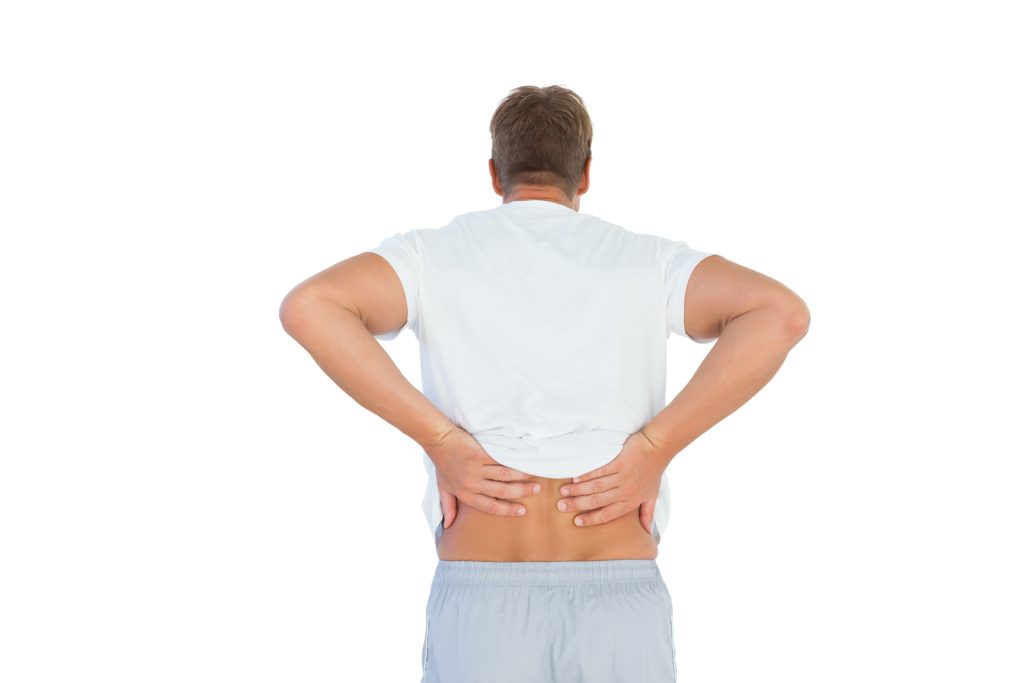Many individuals experience lower back pain, which can stem from various causes of back pain, including arthritis or strain on your back. To prevent back pain, consider incorporating gentle exercises into your daily routine. Staying active may help relieve pain and improve flexibility, reducing the risk of developing chronic low back pain. Additionally, over-the-counter pain relievers can provide temporary relief, especially if your pain doesn’t subside with rest.
Another effective strategy is to sleep on your back with proper back support to maintain alignment. Similarly, when resting, try to lie on your back to minimize stress on your spine. Remember that neck pain and nerve pain may also contribute to overall discomfort, so it’s essential to address any underlying issues. By following these tips, you can help relieve back pain and enhance your overall quality of life.
What Are the Common Causes of Lower Back Pain?

Back pain is a common issue that many people experience at some point in their lives. The cause of pain can vary, but common reasons include back injuries, poor posture, and muscle strain. These factors may cause lower back pain to develop, leading to both acute and chronic lower back pain. For people with back pain, everyday activities may cause pain to become worse, impacting their quality of life.
To help reduce the risk of low back pain, it’s important to maintain a healthy lifestyle and engage in exercises that keep your back strong and flexible. A supportive posture and techniques such as sitting with your knees bent can also prevent low back pain. If you find yourself experiencing pain in the lower back, a pain quiz may assist in identifying potential causes and solutions.
In cases where back pain is caused by underlying issues, seeking professional advice is wise, as back surgery may be necessary for some individuals. Fortunately, many cases of back pain improves with time and proper care. Understanding the common causes of lower back pain can empower individuals to take proactive steps in managing and reducing pain.
Understanding the Common Causes of Lower Back Pain
Understanding the common causes of lower back pain is essential for effective management. Back pain is common, and at some point, many individuals experience pain at some point in their lives. One frequent cause of low back pain is improper posture, where back pain often arises from pressure on your lower back. Engaging in activities with back pain is often exacerbated by movements that increase pain and stiffness.
To alleviate symptoms, it is beneficial to help your back by employing strategies such as keeping your back straight and sitting or lifting back with your knees bent. For some, stretching and strengthening exercises may help relieve back pain, especially in the case of acute low back pain. While chronic pain can be more challenging, understanding your body can help reduce lower back pain and improve your quality of life.
Ultimately, recognizing that back pain may vary in intensity, with pain can range from mild discomfort to debilitating issues, is vital for seeking appropriate care. As lower back pain improves with proper attention and treatment, individuals can regain function and enjoy daily activities with greater ease.
How Poor Posture Can Cause Back Pain
Many individuals experience back pain at some point in their lives, and understanding its causes can be crucial in finding relief. Poor posture can lead to back problems by placing undue strain on the muscles in your back, making the pain worse over time. When your posture is misaligned, it can also affect your hips and lower back, contributing to chronic discomfort.
Identifying the cause of your pain is essential, as back pain is extremely common and often stems from daily habits. Engaging in exercises to strengthen your back and abdominal muscles, alongside exploring treatment options for lower back pain, can help you find relief and help your back feel better. Reducing stress on the spine can lower inflammation and improve overall well-being.
Can Chronic Pain Lead to Persistent Lower Back Pain?
Chronic pain can significantly impact daily life, and it’s understandable to seek solutions. In many cases, back pain caused by underlying issues can evolve into more persistent conditions. It’s important to recognize that low back pain may stem from a variety of sources, making it a complex challenge to navigate. Those experiencing such discomfort may wonder how to relieve chronic symptoms effectively. Integrating targeted therapies and exercises can help with back pain and improve overall function. Additionally, practicing self-care with strategies to address back pain with home treatments can foster a sense of empowerment, aiding in the journey toward relief.
What Home Remedies Can Help Relieve Lower Back Pain?
Lower back pain is so common among people of all ages, and finding effective relief is essential. Many individuals may seek out home remedies to alleviate discomfort and promote healing. Gentle stretching exercises can help maintain flexibility, while hot or cold compresses may provide soothing relief to the muscles. Additionally, maintaining good posture during daily activities is crucial, as it can prevent further strain on the back. Herbal teas, such as ginger or chamomile, are also known for their anti-inflammatory properties, which can help lessen pain. By incorporating these remedies, one can foster a supportive environment for recovery and enhance overall well-being.
Effective Home Remedies for Lower Back Pain Relief
Effective home remedies for lower back pain relief can offer significant comfort and support. One well-regarded approach is gentle stretching, which may help alleviate tension and improve flexibility. Incorporating heat therapy, such as a warm compress or heating pad, can also be beneficial, as it promotes blood flow to the affected area. Additionally, maintaining proper posture while sitting or standing is crucial; the way you align your back may contribute to your overall pain levels. Finally, engaging in low-impact activities, like walking or swimming, can strengthen the muscles around the spine, leading to longer-lasting relief and improved mobility.
How to Use Over-the-Counter Pain Medications for Back Pain
When considering over-the-counter pain medications for managing back pain, it is essential to choose the right option based on your specific needs. Common choices include nonsteroidal anti-inflammatory drugs (NSAIDs) like ibuprofen or naproxen, which can alleviate discomfort and reduce inflammation. It is advisable to follow the dosage instructions on the label or consult with a healthcare professional to ensure safety and effectiveness.
Additionally, it is important to monitor your body’s response to these medications. If back pain persists or worsens despite using these treatments, seeking advice from a qualified healthcare provider is recommended for further evaluation and tailored treatment options.
Natural Remedies That May Help Ease Lower Back Pain
Many individuals seeking relief from lower back pain may find that natural remedies offer a gentle and supportive approach. Common practices such as heat therapy can enhance blood circulation and reduce stiffness, while stretching exercises may improve flexibility and alleviate tension in the back muscles. Additionally, incorporating anti-inflammatory foods into one’s diet can provide further benefits, as they support overall wellness and may help mitigate discomfort.
Moreover, the use of essential oils, such as lavender or peppermint, can create a soothing atmosphere when used in conjunction with massages or baths. Exploring mindfulness techniques may also aid in managing pain perception and promoting relaxation. Always consider consulting a healthcare professional before starting any new treatment regimen.
How Does Physical Therapy Help with Lower Back Pain?
Physical therapy is a valuable approach to managing lower back pain, providing effective strategies to promote healing and improve function. Skilled therapists assess the underlying causes of discomfort and tailor a program specific to each individual’s needs. Through targeted exercises, patients can enhance strength and flexibility, reducing tension in the muscles supporting the spine.
Additionally, therapists educate patients about proper body mechanics and techniques to avoid future injury. Incorporating modalities such as heat therapy or ultrasound can further alleviate pain and inflammation. Ultimately, physical therapy empowers individuals to take control of their recovery, fostering a sustainable path towards long-term well-being.
The Role of a Physical Therapist in Pain Management
Physical therapists play a crucial role in pain management by employing a comprehensive approach tailored to each patient’s unique needs. Through a combination of manual therapy, therapeutic exercises, and patient education, they empower individuals to regain function and improve their quality of life.
Moreover, a physical therapist collaborates with other healthcare professionals to develop an integrated treatment plan that addresses the underlying causes of pain. Their expertise not only helps in alleviating discomfort but also in preventing future injuries.
Ultimately, the guidance and support provided by physical therapists are invaluable for individuals striving to manage their pain effectively and achieve long-term wellness.
Exercises to Strengthen Back Muscles and Prevent Pain
Strengthening back muscles is essential for maintaining a healthy posture and preventing discomfort. Incorporating exercises such as planks, which engage the core, and bird-dogs, which promote stability, can significantly enhance muscular support. Additionally, rows can help develop upper back strength, while glute bridges target the lower back and glutes. It is advisable to focus on proper form and gradually increase intensity to avoid strain.
Regular practice of these exercises not only improves strength but also contributes to overall well-being. Integrating stretching routines can further enhance flexibility, offering a well-rounded approach to back care. Consulting with a fitness professional may also provide personalized guidance.
When to Request an Appointment with a Physical Therapist
It is important to recognize the right moment to request an appointment with a physical therapist to ensure optimal care for your body. If you are experiencing persistent pain or discomfort, or if you have sustained a recent injury, seeking professional advice can aid in your recovery. Additionally, if you have undergone surgery or are managing a chronic condition, a physical therapist can provide specialized guidance.
Moreover, if you notice limitations in your daily activities or a decrease in your mobility, it may be beneficial to consult with a physical therapist. They can perform an assessment and create a tailored treatment plan to address your specific needs.
Ultimately, listening to your body and acting when necessary not only enhances your well-being but also promotes a more active and fulfilling lifestyle.

What Treatment Options Are Available for Chronic Back Pain?
Chronic back pain can significantly impact daily life, but there are various treatment options available to help manage this condition. Initially, many patients find relief through physical therapy, which focuses on strengthening core muscles and improving flexibility. Additionally, medications such as nonsteroidal anti-inflammatory drugs (NSAIDs) may be recommended to alleviate pain and reduce inflammation.
For those seeking alternative approaches, chiropractic care and acupuncture have shown promise in relieving discomfort. In more severe cases, healthcare providers might consider injections or even surgery as potential solutions. It is essential for individuals to consult with a qualified healthcare professional to determine the best course of action tailored to their specific needs.
Overview of Treatment Options for Low Back Pain
When considering treatment options for low back pain, it is essential to recognize the variety of approaches available. Initial management often includes conservative treatments such as rest, ice, and heat application, which can alleviate discomfort. Physical therapy is frequently recommended to enhance mobility and strengthen supportive muscles.
In cases where pain persists, healthcare providers may suggest medications, including nonsteroidal anti-inflammatory drugs (NSAIDs) or muscle relaxants, to provide relief. Additionally, alternative therapies like acupuncture or chiropractic care can be considered as complementary treatments. It is crucial to consult with a qualified professional to determine the most suitable options tailored to individual needs.
How Pain Relief Techniques Can Improve Your Quality of Life
Experiencing chronic pain can significantly impact one’s daily existence, making simple tasks feel overwhelming. However, employing various pain relief techniques can lead to a remarkable enhancement in your overall well-being. Techniques such as physical therapy, mindfulness practices, and alternative therapies can empower individuals to regain control over their lives.
By integrating these methods into your daily routine, you may find an increase in mobility, improved emotional health, and a renewed sense of vitality. Ultimately, prioritizing pain management not only alleviates discomfort but also fosters a greater appreciation for life’s simple pleasures, allowing for a more fulfilling existence.
Understanding When to Seek Medical Care for Back Pain
Understanding when to seek medical care for back pain is essential for maintaining your overall well-being. While many instances of back discomfort can be effectively managed at home with rest and over-the-counter medications, it is crucial to be aware of certain signs that necessitate professional evaluation. If you experience severe pain that persists beyond a few days, or if you notice any accompanying symptoms such as numbness, weakness, or loss of bladder control, it is important to consult a healthcare provider promptly.
Additionally, if your back pain follows an injury or trauma, or if it is the result of a prolonged illness, seeking medical advice can help prevent further complications. Remember that addressing back pain early can lead to more effective treatment and a quicker recovery.
What Posture Tips Can Help Prevent Lower Back Pain?
Maintaining a proper posture is essential in preventing lower back pain. When sitting, ensure that your back is straight, and your feet are flat on the ground. You may consider using a lumbar support cushion to enhance comfort and support the natural curve of your spine.
While standing, distribute your weight evenly on both feet and avoid locking your knees. Engaging your core muscles and using your legs when lifting heavy objects can significantly reduce strain on your lower back. Remember, regular stretches and exercises focused on core strength can also be beneficial in maintaining a healthy posture.
How Maintaining a Healthy Posture Can Relieve Back Pain
Maintaining a healthy posture is essential for promoting overall well-being and can significantly relieve back pain. When we align our bodies correctly, we reduce unnecessary strain on our muscles and spine, allowing for improved circulation and flexibility. Simple adjustments, such as sitting up straight or using ergonomic furniture, can make a substantial difference in our daily comfort. Furthermore, engaging in exercises that strengthen the core and back muscles can help to support our posture over time. By prioritizing posture awareness, individuals can not only alleviate existing discomfort but also prevent future issues, leading to a more active and fulfilling life.
Best Sleeping Positions to Reduce Lower Back Pain
Finding the best sleeping positions can significantly alleviate lower back pain. One recommended position is sleeping on your back with a pillow under your knees, which helps maintain the natural curve of your spine. Another effective option is to lie on your side with a pillow between your knees, providing extra support to your hips and lower back. Additionally, sleeping in a fetal position can offer comfort for those with chronic pain, as it promotes spinal alignment. It’s essential to choose a supportive mattress and pillow to further enhance your sleeping posture and reduce discomfort.
Tips for Ergonomic Workstations to Support Your Spine
Creating an ergonomic workstation is essential for maintaining a healthy spine. First, consider your chair; it should offer proper lumbar support to maintain the natural curve of your back. Adjust the height to ensure your feet rest flat on the floor.
Next, position your computer monitor at eye level, so you avoid straining your neck while working. The screen should be about an arm’s length away to reduce eye fatigue.
Additionally, keep your keyboard and mouse close enough to prevent reaching, which can lead to shoulder and back discomfort. Regular breaks for stretching can also contribute to a healthier working environment.
When Should You Consider Medical Intervention for Lower Back Pain?
Lower back pain is a common issue that many individuals experience at some point in their lives. However, it is important to recognize when medical intervention may be necessary. If your pain persists for more than a few weeks, intensifies, or is accompanied by other concerning symptoms such as numbness, tingling, or weakness in the legs, it would be wise to consult a healthcare professional.
Additionally, if you find that the pain significantly interferes with your daily activities or leads to sleep disturbances, seeking medical advice can provide you with appropriate treatment options. Early intervention can often lead to better outcomes and improved quality of life.
Signs That Your Lower Back Pain Requires Medical Attention
Understanding the signs that your lower back pain may require medical attention is essential for maintaining your overall health. If you experience persistent pain that lasts longer than a few weeks, it is advisable to consult a healthcare professional. Additionally, if the pain is accompanied by numbness or tingling in your legs, this may indicate a more serious issue that warrants further evaluation.
Moreover, if you find it difficult to control your bowel or bladder functions, this could be a sign of a condition that requires immediate medical intervention. Listening to your body and seeking timely advice can help ensure a more favorable outcome.
The Importance of Addressing Chronic Back Pain Early
Addressing chronic back pain early is crucial for maintaining overall well-being and ensuring a higher quality of life. Early intervention can significantly reduce the risk of long-term complications and prevent the condition from worsening. Individuals experiencing discomfort should seek professional guidance promptly, as this can lead to more effective treatment options and better management strategies.
Moreover, understanding the underlying causes of chronic back pain can empower patients to make informed decisions about their health. Engaging in preventive measures, such as physical therapy and lifestyle adjustments, can foster recovery and promote resilience against future episodes. Ultimately, prioritizing early action is a vital step in enhancing both physical and emotional health.
How to Discuss Your Symptoms with a Healthcare Provider
When preparing to discuss your symptoms with a healthcare provider, it’s essential to approach the conversation with clarity and honesty. Begin by clearly describing your symptoms, including when they started, their frequency, and any factors that may worsen or relieve them. This provides valuable context for your provider.
Additionally, don’t hesitate to share any relevant medical history or current medications, as this information can assist in a comprehensive evaluation. Remember, your healthcare provider is there to help, so ask questions and seek clarification if you don’t fully understand their feedback or recommendations.










Pingback: Unlocking Ashwagandha Benefits for Men: A Natural Solution for Erectile Dysfunction - Billboard Health